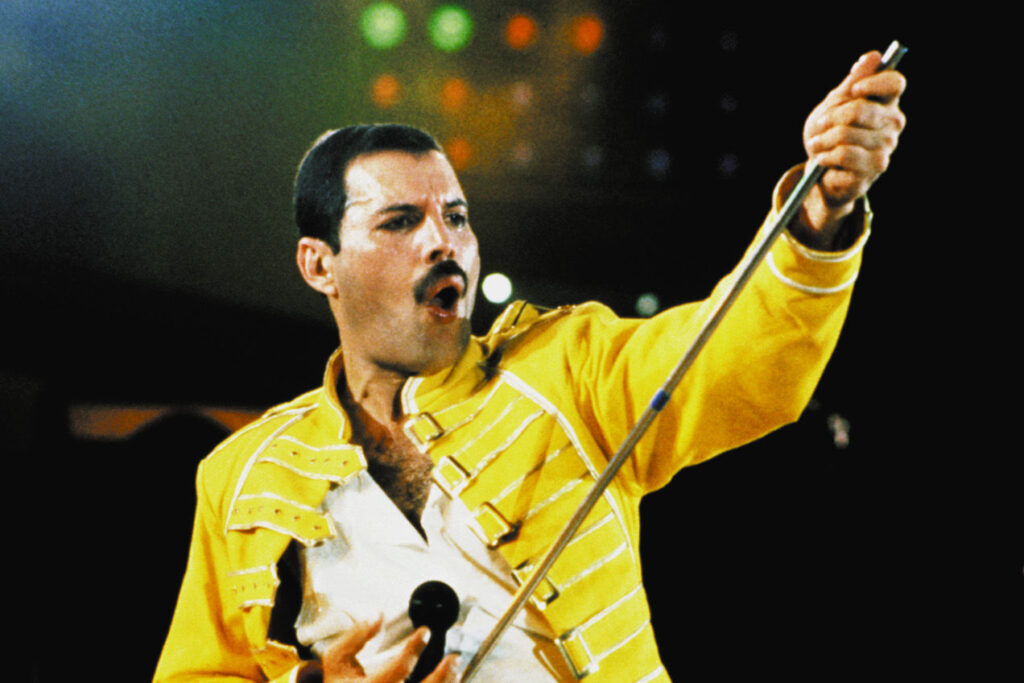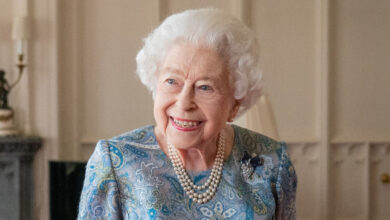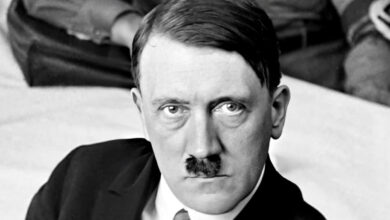
Podcast: Play in new window | Download
Subscribe: Spotify | Amazon Music | Youtube Music | RSS
“I won’t be a rock star. I will be a legend.” – Freddie Mercury
Farrokh Bulsara, known to everyone in the world as Freddie Mercury was born on 5 September 1946 in Stone Town, Zanzibar, which is now part of Tanzania. He was the second of two children, as he had a younger sister called Kashmira, who was born to parents Bomi and Jer Bulsara who were from the Parsi community of Western India.
Freddie grew up in India and spent most of his time with relatives. He developed an interest in music from a very early age, and from the age of seven began to take piano lessons. He began attending the St, Peter’s School near Bombay the following year where he formed a band called The Hectics which covered mostly Western pop and rock music. From the age of about twelve, he started to refer to himself as Freddie and at the age of sixteen, he moved back to Zanzibar to live with his parents in their flat.
Over the next few months, violence started to escalate and turned into a full-blown revolution which resulted in the overthrow of the Sultan of Zanzibar and his Arab government, during which, thousands of Indians were persecuted and killed. This led to the Bulsara family deciding to flee the country in the Spring of 1964 and so they headed for the UK and settled in Feltham, Middlesex where Freddie learned to play the guitar.
Now college-aged, Freddie began studying at Isleworth Polytechnic in West London before heading to Ealing Art College to study art and design from where he graduated in 1969. He joined several different bands after leaving college, during which time he met drummer Roger Taylor and the pair attempted to make ends meet by selling clothes at Kensington Market.
After a couple of failed attempts to make a success out of bands he joined, both in Liverpool with Ibex and in Oxford with Sour Sea Milk, he joined forces in April 1970 with guitarist Brian May and Roger Taylor to form a band called Smile. The following year, the band was joined by John Deacon who played the bass guitar. At this point, the new name of ‘Queen’ was chosen for the band by Freddie and he also legally changed his surname to Mercury.
It was through Brian May that Freddie met Mary Austin and he lived with her for several years during the 1970s in West Kensington, London, but by the middle of the decade, he had started an affair with David Minns. In 1976, the romantic relationship between Freddie and Mary came to an end after he revealed his sexuality to her. Freddie moved in with Minns and he bought Mary her own place in Kensington. Freddie often referred to Mary as his only true friend.
Queen recorded several tracks ready for their first album which was also called ‘Queen’ and Freddie used his artistic skills to design a crest which appears on the album cover and became Queen’s logo. It is quite a complex design and includes representations of the zodiac signs for each of the four band members, two lions representing Leo for John Deacon and Roger Taylor, a crab representing Cancer for Brian May and two fairies apparently representing Virgo for Freddie.
Although other members of the band contributed songs, Freddie was the most prolific of songwriters. Queen’s Greatest Hits album contains seventeen tracks and ten of them were written by him including songs that will likely never be forgotten such as Bohemian Rhapsody, We Are the Champions, Don’t Stop Me Now and Killer Queen. Freddie displayed a huge range in songwriting styles as well using inspiration from heavy metal, opera, gospel, disco and rockabilly, once explaining that he never liked to do the same thing twice.
Not only was Freddie Mercury a prolific and talented songwriter and gifted vocalist, but he was also a showman who revelled in his ability to control an audience during live performances albeit that this was the antithesis of the private, shy man that he was off-stage. He loved to get the audience involved often getting them to follow him in ad-libbed vocal scales. Recording studio albums was good but live performances were everything to Freddie and in all, he performed in over 700 concerts around the world with Queen, the final one of which took place in front of an estimated 160,000 people at Knebworth Park in England on 9 August 1986.
In 1985 Freddie began a long-term relationship with Jim Hutton, a hairdresser whom Freddie would often refer to as his husband and he wore a gold wedding band given to him by Hutton in 1986.
Another long-term relationship that Freddie had, albeit not a romantic or sexual one, was with the popular UK disc jockey Kenny Everett. They had met when Freddie was invited in 1974 to be a guest on Kenny’s Capital London breakfast show. The following year Freddie played Bohemian Rhapsody for Kenny who said “It’s going to be number one for centuries” after hearing it even though Freddie didn’t think it would get any air-time on the radio due to its run-time being over six minutes. At one point Kenny Everett played the song 36 times in one day even though the station hadn’t officially accepted it onto the playlist. The result was a jammed switchboard with people demanding to know when the single would be released. Freddie and Kenny explored London nightlife as well as their sexuality during the late 1970s and into the middle of the 1980s at which point they had a falling out although they were reconciled in 1989 as the health of both of them was beginning to fail.
Freddie Mercury was never an outspoken ally of LGBT causes but at the same time, he never made too much of an effort to hide his sexuality in a United Kingdom that had de-criminalised homosexual acts in 1967 but was still learning how to deal with what that meant for society.
As well as his work with Queen, Freddie also produced a couple of solo albums which enabled him to indulge himself in other sorts of music that didn’t fit with the band. The albums were not as commercially successful as Queen’s but some of the music was critically acclaimed. The track Living on My Own, which was also released as a single off the Mr Bad Guy album was posthumously awarded an Ivor Novello Award, and a 1993 remix of it went to number one in the UK singles chart after Freddie’s death. The second solo album entitled ‘Barcelona’ featured pop music fused with opera and was recorded with the Spanish opera star Montserrat Caballé.
The liner notes for the Mr Bad Guy album include the following dedication, “This album is dedicated to my cat Jerry – also Tom, Oscar, and Tiffany and all the cat lovers across the universe – screw everybody else!” This dedication shows just how devoted he was to his cats, of which he had ten all of which were rescue cats, except for two that had been gifts. He loved them so much that he commissioned the artist Ann Ortman to paint a portrait of each one and his favourite cat of all, Delilah even has her own song on the Queen album Innuendo.
As early as 1982, there had been signs that Freddie Mercury was suffering from HIV but it wasn’t until 1986 that it was reported in the British press that he had been tested for the virus at a clinic on Harley Street, although when questioned about it he denied having tested positive. According to Jim Hutton, who stayed with Freddie until the end, he was diagnosed with AIDS in April 1987. The press never let up, and hounded him for statements and published pictures of him looking haggard and gaunt.
Freddie’s final appearance on stage was at the Brit Awards ceremony in 1990 when he joined the rest of Queen to receive the Brit Award for Outstanding Contribution to British Music. Although it was obvious to everyone that something was seriously wrong, he and his closest friends kept denying it.
Freddie’s final scenes in front of a camera were filmed in May 1991 for the official music video of These Are the Days of Our Lives and on 23 November 1991, a public statement was released in which Freddie finally confirmed that he had tested positive for HIV and that he had AIDS. During the evening of the following day, Freddie Mercury, at the age of only 45, died at his home in Kensington. The funeral service was attended by 35 of Freddie’s closest friends, including Elton John and the members of Queen. His body was cremated, and his ashes were entrusted to Mary Austin to be buried in an undisclosed location. That location is thought to be known only to her and she has said that it will never be revealed.
Podcast: Play in new window | Download
Subscribe: Spotify | Amazon Music | Youtube Music | RSS




